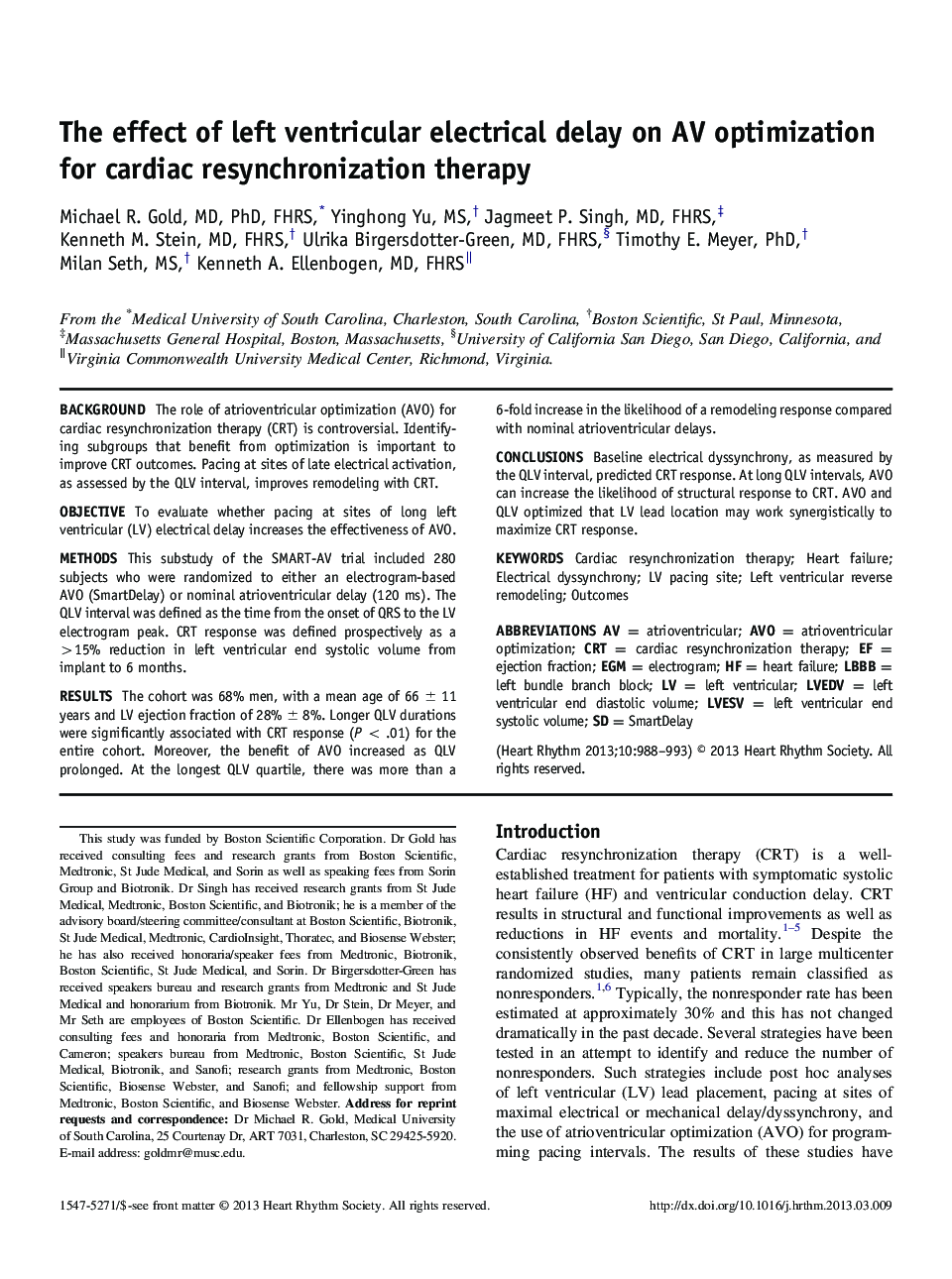| Article ID | Journal | Published Year | Pages | File Type |
|---|---|---|---|---|
| 2922266 | Heart Rhythm | 2013 | 6 Pages |
BackgroundThe role of atrioventricular optimization (AVO) for cardiac resynchronization therapy (CRT) is controversial. Identifying subgroups that benefit from optimization is important to improve CRT outcomes. Pacing at sites of late electrical activation, as assessed by the QLV interval, improves remodeling with CRT.ObjectiveTo evaluate whether pacing at sites of long left ventricular (LV) electrical delay increases the effectiveness of AVO.MethodsThis substudy of the SMART-AV trial included 280 subjects who were randomized to either an electrogram-based AVO (SmartDelay) or nominal atrioventricular delay (120 ms). The QLV interval was defined as the time from the onset of QRS to the LV electrogram peak. CRT response was defined prospectively as a >15% reduction in left ventricular end systolic volume from implant to 6 months.ResultsThe cohort was 68% men, with a mean age of 66 ± 11 years and LV ejection fraction of 28% ± 8%. Longer QLV durations were significantly associated with CRT response (P < .01) for the entire cohort. Moreover, the benefit of AVO increased as QLV prolonged. At the longest QLV quartile, there was more than a 6-fold increase in the likelihood of a remodeling response compared with nominal atrioventricular delays.ConclusionsBaseline electrical dyssynchrony, as measured by the QLV interval, predicted CRT response. At long QLV intervals, AVO can increase the likelihood of structural response to CRT. AVO and QLV optimized that LV lead location may work synergistically to maximize CRT response.
